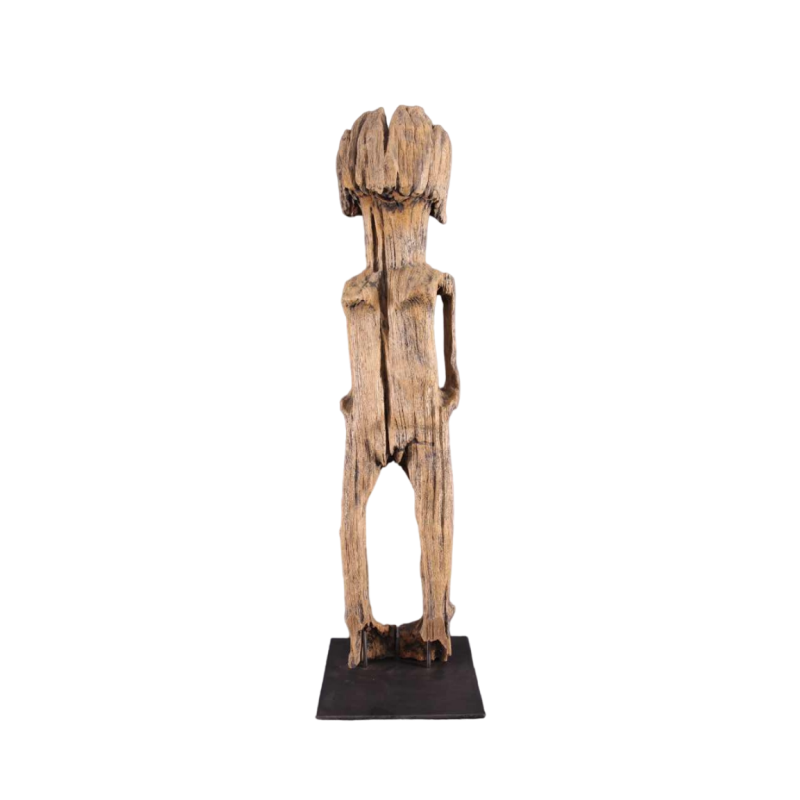Antica Namur Fine Art Fair : 08-16 November 2025 : More info
-
-
-
-
- Archaeology & minerals
- Antique weapons
- Comics - cels & derivative products
- Vienna bronzes
- Seals - stamps
- Postcards
- Curiosities
- Black Forest
- Musical instruments
- Scientific instruments
- Toys
- Medals
- Military collectibles
- Coins
- Religious objects
- Fragrances
- Knobs - canes - parasols - umbrellas
- Dolls
- Advertising
- Sports
- Taxidermy
- Postage stamps
- Classic vehicles (pre-1980)
- Wines & spirits
- Radios - Audio-visual
- Camera
- Other collectibles
- Hunting objects
African tribal art - Sakalava figure
-
Secure payment in 3 interest-free installments with Klarna
-
Fast and insured delivery
-
Easy 14-Day Return
Stemming from the tribal art collection of Guy Mercier, a consultant for the Solvay group, Mercier began his research at the beginning of the 20th century, particularly in West and Central Africa, where he collected works directly in the field. However, the majority of his collection comes from the "cabinets of curiosity" that flourished in Europe's major capitals during the 1920s. He also acquired pieces from prestigious galleries in Paris, Brussels, London and New York.
Madagascar's most emblematic sculptures are related to funerary statuary. Mahafaly statues, integrated into aloalo pillars, are often accompanied by fragments of panels placed above the heads. Conversely, figures of Sakalava ancestors, sculpted in the round, frequently represent the deceased accompanied by his or her partner of the opposite sex. The northeast of the tomb, a sacred zone associated with dawn, resurrection and the rite of circumcision, was considered by the Malagasy to be the ideal location for the statue of the deceased. In the opposite direction, to the south-west of the tomb, the statue of the deceased's partner was placed, symbolizing perfect union.
Ancestor statues are generally depicted from the front, with a straight, rigid bust. The wear and tear of time, under the effect of wind, salt and sand, has altered these sculptures, gouging and cracking the wood, giving the material a distinctive dry texture and a light, matt patina.
Madagascar, a tropical island off the east coast of Africa, has long been inhabited by peoples of Polynesian origin, who settled on the eastern coast of the continent before being pushed out by Arab-Muslim traders. By the early 16th century, several kingdoms had formed on the island, including that of the Sakalava on the west coast. Some sources also indicate that the Vezo fishermen on the south coast of the island were the first to take to the sea.
Data sheet
- Period
- 20th century
- Dimensions (H - W - D)
- 56 x 13 x 0
- Weight
- 2.5
- Condition
- Good
- Styles
- First Cultures Art
Primitive Art
Tribal Art - Colours
- Beige
- Materials
- Wood
- Ethnicity or Continent of origin
- Africa & Oceania
Country of destination : France
- Pickup on site or shipping to be arranged - €0.00 -
- Correos - €18.15 -
- Chronopost - €18.60 - between 10/11 and 13/11
- UPS - €20.00 - between 10/11 and 12/11
- UPS - €20.57 - between 13/11 and 14/11
- UPS - €21.78 - between 10/11 and 11/11
- UPS - €24.20 - between 12/11 and 13/11
Report illegal content
This form is only used to notify us of illegal content on product: African tribal art - Sakalava figure.
(https://www.artaplaza.com/en/other-sculptures/5084-african-tribal-art-sakalava-figure.html)
-
verified
Authenticity verified by our team of experts
-
local_shipping
Secure worldwide delivery within 5 to 10 business days
-
credit_card
100% secure payment via Stripe or credit card
-
undo
Returns possible within 14 days
















